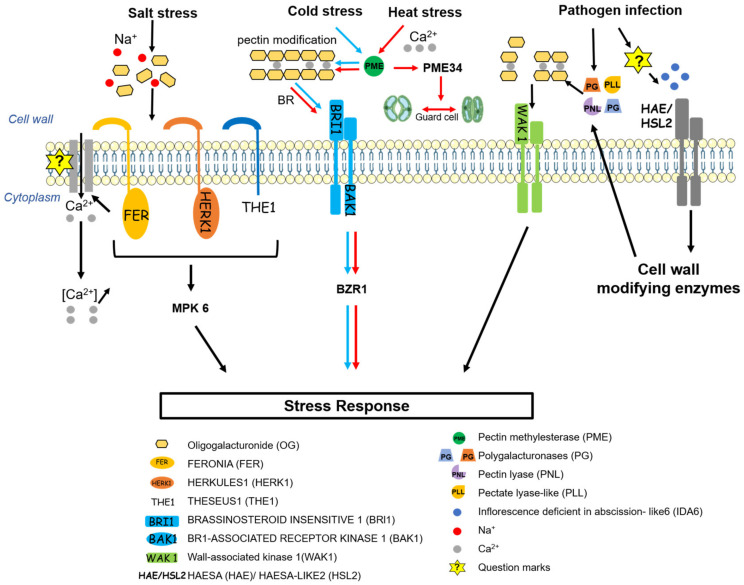Figure 2.
The roles of pectin in signaling processes during interactions with the environment. Salt stress affects the cell wall because sodium ions disrupt pectin crosslinking. The cell wall sensor FERONIA (FER), in combination with HERKULES1 (HERK1) and THESEUS1 (THE1), senses salinity through its pectin-binding extracellular domain, leading to an increase in cytosolic [Ca2+] and mitogen-activated protein kinase 6 (MPK6) function, which are required for salt-induced gene expression. Cold stress induces the expression of pectin methylesterase (PME) and modulates the rigidity of the cell wall via brassinosteroid (BR) signaling. BR molecules are perceived by BRI1, triggering the formation of BRI1-BAK1, which initiates an intracellular phosphorylation relay cascade and activates BZR1. Heat stress in combination with Ca2+ increases the rate of demethylesterification via PME activity. PME34 is involved in regulating stomatal aperture during heat stress. During pathogen infection, pectin is degraded to produce oligogalacturonides (OGs), which are detected by wall-associated kinase 1 (WAK1), leading to a strong immune response. The pathogen secretes polygalacturonase (PG), pectin lyase (PNL) and pectate lyase-like (PLL) to degrade pectin and attempt infection. It also regulates IDL6 expression and the downstream HAE/HSL2 pathways to produce pectin-degrading enzymes from the host. Question marks represent an unknown receptor, MPK, or transcription factor.

